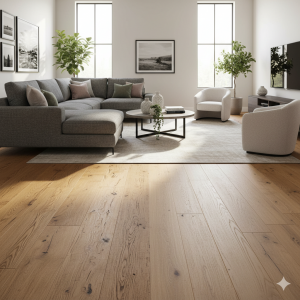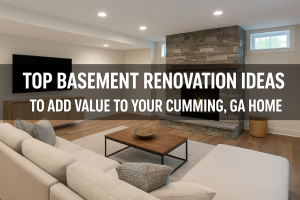From Ceilings to Shelves: Plywood Panels Can Do It All

Why Plywood Panels Are Taking Over Every Corner of the House
People want materials that are strong, adaptable, and easy to work with. That’s why plywood sheets are now being used beyond just cabinets or tabletops. Whether you’re redoing your ceiling or adding shelves, plywood offers a practical and stylish solution. It works well for different parts of your home without needing multiple materials.
Ceilings That Don’t Look Dull
False ceilings made with regular materials crack, stain, or sag. Plywood sheets avoid all three. You can cut them into shapes, install lighting, or create layered effects. Some designers now use plywood as visible ceiling panels for a natural wood look. It’s neat, solid, and doesn’t feel like plasterboard.
Shelves That Actually Carry Weight
Many shelves look good until you put something on them. That’s where plywood for furniture makes a difference. It holds books, appliances, plants – all without warping. Floating shelves, box shelves, or open storage units built with plywood last longer and keep their shape.
Wardrobes Built for Daily Use
Opening and closing wardrobe doors daily takes a toll on joints and edges. When you use plywood for furniture like wardrobes or dressers, it gives a more solid base. You can laminate, paint, or finish it with veneer. The interior stays firm. The outer surface stays clean.
Study Tables That Don’t Wobble
Working from home made a lot of people realise how weak their desks were. Plywood sheets are now used to build custom workstations, foldable tables, and side desks. The edges stay straight. The panels don’t flex. You get a workspace that feels solid and fits your room size.
Panelling Without the Bulk
Wall panelling adds style but often eats up space. Plywood sheets can be installed as vertical or horizontal panels on walls to give the same look without heaviness. Whether painted white or left in natural finish, they create clean lines across the room. You get insulation, design, and flexibility.
Compact Kitchen Units
Plywood for furniture is most visible in kitchens. From drawer boxes to overhead cabinets, it’s used because it resists wear, moisture, and weight. It’s also easier to repair. Small dents or scratches can be sanded. Hinges grip better. That’s why modular kitchen makers prefer plywood.
TV Units That Don’t Break the Wall
Modern homes need media units that hide wires, hold gadgets, and don’t take up floor space. Plywood sheets are used to create wall-mounted TV back panels, floating units, and drawer storage. The material holds screws tightly and doesn’t chip easily. It’s functional and clean-looking.
Beds with Storage That Don’t Squeak
Many storage beds feel loose after a few months. That’s often due to poor base material. When you build beds using plywood for furniture, you get tighter joints, better hinges, and a firm structure. Even with under-bed drawers, the shape stays intact.
5 Everyday Uses of Plywood Panels That Save Time and Cost
- Floating shelves in the kitchen, study, or bedroom
- False ceiling panels with LED strip lighting
- Open shoe racks or organisers in the foyer
- Bedside tables or compact vanity counters
- Minimalist work desks with clean edges
Plywood Works Because It’s Predictable
Unlike raw wood, plywood sheets have uniform thickness and finish. That means no unexpected splits or soft spots. You can pre-plan sizes, cuts, and fittings. It also means less wastage. When you’re doing a renovation, predictability saves both time and cost.
Moisture-Resistant Finishes Make It More Reliable
Modern plywood panels come in moisture-resistant grades. That’s why they’re now used in kitchens, bathrooms, and balconies. When sealed right, plywood handles changes in humidity better than regular boards. Plywood for furniture in these areas means fewer repairs and longer life.
Why It Works for DIY Too
You don’t need heavy machinery to cut plywood sheets. That makes it easier for people doing home upgrades themselves. Pre-cut panels, ready templates, and standardised thicknesses help. It’s ideal for people who want to experiment with home improvement without calling in a full team.
What to Keep in Mind When Choosing Plywood
Check the grade and thickness based on where it’s being used. For ceilings and panelling, go lighter. For beds and shelves, pick 18mm or thicker. And for furniture exposed to moisture, pick waterproof plywood and seal the edges. The right plywood makes the difference between a quick fix and a lasting solution.
Final Word: One Material, Many Solutions
Plywood panels are no longer a backstage material, but the key design element. They are durable, economical and they are attractive with the appropriate finishing. They deal with structure as well as style, whether in ceilings or shelves.
When it comes to projects requiring long-term durability and a smooth finish, selecting the appropriate plywood is everything. CenturyPly is a name that homeowners and professionals rely on when it comes to high-quality plywood sheets and plywood furniture that can be used in all parts of the house.




